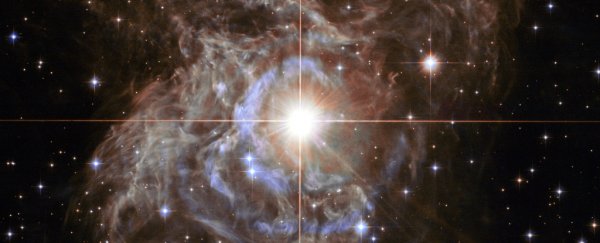There's a problem with the accelerating rate of the expansion of the Universe.
More specifically, there's a problem with how we measure the accelerating rate of the expansion of the Universe, called the Hubble Constant. We have two major methods for measuring the Hubble Constant, and no matter how many times we apply them, they always return different results.
This has led some to suggest we need new physics to explain the discrepancy. But theoretical physicist Lucas Lombriser of the University of Geneva in Switzerland has come up with a different approach.
According to Lombriser, if the Milky Way galaxy is floating in a vast low-density cavity in space, that could explain why the measurements don't match up. By adjusting our equations to account for that density difference, we could significantly reduce the measurement gap.
But before we get into that, we need to briefly explain the two measurements of the Hubble Constant.
The first is based on the cosmic microwave background (CMB), the faint glow of background radiation permeating the Universe, left over from the Big Bang. The CMB has been pretty comprehensively mapped by a number of surveys, so we know it has hotter and cooler regions that correspond with expansions and contractions of matter in the early Universe.
These can be studied to learn about the expansion history of the Universe. Based on this information, calculations of the Hubble Constant usually return a result hanging around the vicinity of around 67.4 kilometres per second per megaparsec.
The other method for arriving at the Hubble Constant involves measuring the distances to objects with known brightness, such as extremely bright Type Ia supernovae and Cepheid variable stars, a type of star that has a known relationship between its brightness and its periodic pulsations.
Knowing their absolute brightness allows astronomers to calculate the distance to these objects, because brightness fades over distance at a known rate; hence, we sometimes refer to such objects as standard candles.
This latter method returns a different expansion rate from the one we get when peering at the cosmic microwave background. Type Ia supernovae recently returned a result of 72.8 kilometres per second per megaparsec. Extragalactic Cepheid variables in Ia supernova host galaxies gave an even wilder result - 74.03 kilometres per second per megaparsec.
"These two values carried on becoming more precise for many years while remaining different from each other," Lombriser said.
"It didn't take much to spark a scientific controversy and even to arouse the exciting hope that we were perhaps dealing with a 'new physics'."
But the standard candle model has a weakness. The equations for calculating the expansion of space assume a homogeneous distribution of mass throughout the Universe. On large scales, that's probably more or less true - but on smaller scales, it might not be.
And that could affect how the space around us is behaving. Because if our home galaxy is in a low density bubble, the gravitational pull from the higher density shell outside the bubble would give the galaxies it's pulling a little acceleration boost - making them appear to move faster than the expansion of the Universe would suggest.
"If we were in a kind of gigantic 'bubble'," Lombriser said, "where the density of matter was significantly lower than the known density for the entire Universe, it would have consequences on the distances of supernovae and, ultimately, on determining the Hubble Constant."
This is not the first time such a dynamic has been proposed. But what Lombriser has done is mathematically describe the parameters of the bubble that would result in the observed effect.
He calculated that if we were in a bubble of space around 250 million light-years across, with less than half the mass density of the space around it, then the standard candle Hubble Constant calculations would be more consistent with the cosmic microwave background Hubble Constant calculations.
And we do know such lower-density voids exist, because the Universe is a weirdly clumpy place. The Milky Way is right on the edge of one. It's at least 150 million light-years across, and maybe as large as 300 million light-years.
However, before we can announce the mystery has been solved, we need to keep in mind other recent research has found that the local structure of the Universe has no effect on the standard candle measurements of the Hubble Constant.
That still doesn't mean we need new physics. Yet more research has suggested that our understanding of Type Ia supernovae is flawed, and that we could be miscalculating their brightness. Another study suggests there could have been another kind of dark energy that provided additional acceleration in the early Universe.
But Lombriser believes his theory has legs.
"The probability that there is such a fluctuation on this scale is one in 20 to one in five, which means that it is not a theoretician's fantasy," he said.
"There are a lot of regions like ours in the vast Universe."
The research has been published in Physics Letters B.
